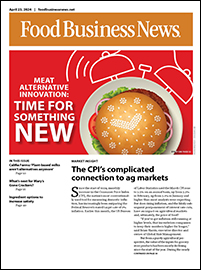The compilation of whole wheat flour output began five years ago at a time when the Bureau of the Census in the U.S. Department of Commerce was engaged in issuing quarterly reports on U.S. flour output, but without separate figures on whole wheat. What began as an effort to provide a helpful supplement to the Census reports became something much different when budget limits prompted the Census to halt in 2011 its periodic reports on flour milling production, ending a stream of information that extends over almost a century.
To the great credit of the leadership of the North American Millers’ Association, that association recognized how important it is for milling to continue to have access to information about production. Beginning with the July-September quarter of last year, NAMA has published output statistics gathered by Veris Consulting, Inc., an independent compiler of industry statistics. Prompt reporting has characterized this program, as well as a commitment to sharpen the process when errors have occurred.
Strikingly apparent from the NAMA-Veris effort and the assembling of whole wheat flour data by this magazine is the complexity of the American milling industry and the way in which mill locations across the country may lead to data confusion. Termination of this publication’s whole wheat survey recognizes the NAMA-Veris decision to include whole wheat flour as a separate figure in its compilations. One effort ought to be sufficient to supply such statistics. The information must be accurate to the point it may be relied on making management decisions influenced by the numbers themselves. While millers generally appreciate the importance of the production data, the accuracy of individual reports sometimes suffers, if for no other reasons than haste in preparation and a failure to understand what is asked. Looming large is the voluntary nature of participation, contrasting with the mandatory reporting required by the Census Bureau.
When the Census Bureau began warning of the consequences of budget cuts on the gathering of industrial production statistics, hardly anything created more foreboding from Washington than the loss of mandatory reporting. Attention was called to the action of every Congress, starting with the very first, to make participation mandatory. That step was attributed to understanding the importance of such statistics as a guide to government and to industry in choosing future directions.
In the wake of such dire warnings about mandatory versus voluntary and the quality of the statistics, it is comforting to declare that participation across milling has been exemplary. Yes, the data are meaningful and may be relied upon, even in those instances where indicated changes seem contrary to the experiences of individual companies. Most assuredly, the industry’s complexity justifies revisions and modifications as the process moves forward. By providing the data now available for four quarters, NAMA has done the right thing in a manner that assures that milling is one industry that knows where it has been and can use that information to plan for its future.


